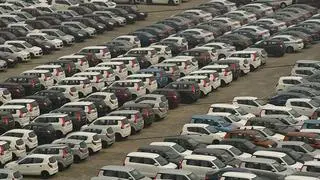Noting that India’s slowdown has significant spillover effects on the rest of South Asia, the World Bank has said South Asian countries need to work hard on reforms.
Observing that the turmoil in global capital should come as a wake-up call for South Asia, which was the second-fastest growing region in the world in the aftermath of the global crisis, the World Bank yesterday said its recent performance has been less stellar, and it has been sustained by potentially volatile portfolio inflows.
Projecting that economic growth in South Asia will be modest this year and in 2014, the South Asia Economic Focus report of the World Bank said at such a pace, the goal of ending extreme poverty by 2030 will not be attained.
Governments must work harder on reforms to raise growth in a region where most of the world’s poor live, the World Bank said in its reports released on the sidelines of the annual plenary meeting of the International Monetary Fund and the World Bank.
“South Asia must return to the growth rates achieved before the global financial crisis of at least eight percent a year so that it can significantly reduce poverty,” said Philippe Le Houu, World Bank Vice President for the South Asia Region.
“South Asia is critical to the World Bank Group goals of ending extreme poverty and boosting shared prosperity by 2030 and we will work with governments in the region to overcome barriers to growth and provide greater opportunity for all,” he said.
Recent global capital rebalancing, driven by fears of unwinding of easy monetary policy in the US, has highlighted structural weakness and vulnerability in South Asia.
“This provides a wake-up call for policymakers not to lose focus on tackling key economic and investment constraints,” the World Bank report said.
Region’s GDP figures
Regional GDP is projected to grow by 4.4 per cent in the 2013 calendar year, 5.7 per cent in 2014, and 6.2 per cent in 2015, driven by an improvement in export demand, measures to speed up the implementation of large infrastructure projects in India, stronger private investment activity, and a good monsoon, the report said.
India, the region’s main economy – around 80 per cent of South Asian GDP – is projected to grow by 4.7 per cent at factor cost in fiscal year (FY) 2013/14, a slight decline from an estimated 5 per cent real GDP growth in FY 2012/13, it said.
Although partly reversed, India’s rupee depreciation of around 20 percent between May and August 2013 reflected changing market sentiment towards the region and the increasing vulnerability to external shocks, the report said.
Overall, South Asia regional growth is expected to moderate in 2013 compared to prior projections.
Regional growth has deteriorated in the second and third quarters of 2013, mainly due to supply-side constraints and weak domestic demand, it said.
According to the report, while fundamentals in South Asia have not changed significantly over the last 12 months, exuberance has given way to pessimism, particularly in the case of India.
“Like other developing regions, South Asia is facing greater turbulence as markets reassess sources of global growth and risks,” it said.
As capital may become scarcer for developing and emerging markets, those with more pronounced structural weaknesses and higher external exposure will remain more vulnerable.
However, short term capital market turbulence is manageable and the return to sustainable growth in the developed world is a positive development for South Asia, the report said.







Comments
Comments have to be in English, and in full sentences. They cannot be abusive or personal. Please abide by our community guidelines for posting your comments.
We have migrated to a new commenting platform. If you are already a registered user of TheHindu Businessline and logged in, you may continue to engage with our articles. If you do not have an account please register and login to post comments. Users can access their older comments by logging into their accounts on Vuukle.